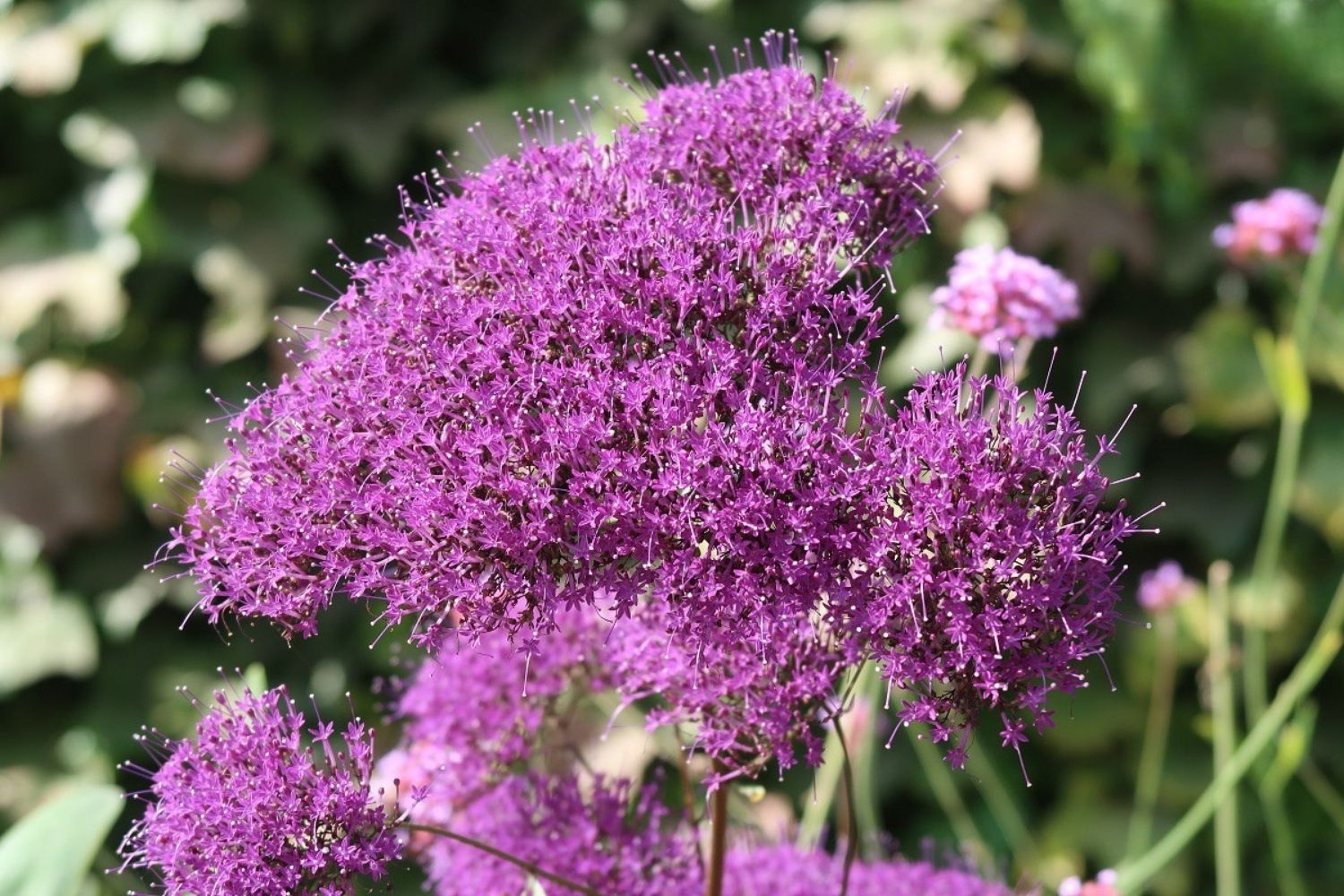
Trachelium, also known as throatwort, is a fascinating plant that often goes unnoticed. With its delicate, star-shaped flowers and lush green foliage, it adds a touch of elegance to any garden. But what makes this plant truly special? Trachelium is not just a pretty face; it has a rich history and unique characteristics that set it apart. From its origins in the Mediterranean to its uses in traditional medicine, there's much to learn about this botanical gem. Whether you're a gardening enthusiast or just curious about plants, these 29 facts will give you a deeper appreciation for trachelium. Ready to be amazed? Let's dive in!
What is Trachelium?
Trachelium, commonly known as Throatwort, is a genus of flowering plants in the Campanulaceae family. These plants are native to the Mediterranean region and are known for their beautiful, dense clusters of tiny flowers. Let's dive into some fascinating facts about Trachelium.
-
Trachelium's Name Origin
The name "Trachelium" is derived from the Greek word "trachelos," meaning neck. This name references the plant's historical use in treating throat ailments. -
Native Habitat
Trachelium plants are native to the Mediterranean region, thriving in countries like Italy, Spain, and Greece. -
Flower Colors
These plants produce flowers in a variety of colors, including blue, purple, white, and pink. -
Blooming Season
Trachelium typically blooms from late spring to early autumn, providing a long season of color. -
Height and Spread
These plants can grow up to 3 feet tall and spread about 1 to 2 feet wide. -
Flower Structure
The flowers are tiny and densely packed into large, dome-shaped clusters, creating a striking visual effect. -
Attracts Pollinators
Trachelium flowers attract bees, butterflies, and other pollinators, making them a great addition to a pollinator-friendly garden. -
Medicinal Uses
Historically, Trachelium was used in herbal medicine to treat throat and respiratory issues. -
Easy to Grow
These plants are relatively easy to grow and require minimal maintenance, making them ideal for beginner gardeners. -
Preferred Soil
Trachelium prefers well-drained soil and can tolerate a range of soil types, from sandy to loamy.
Growing and Caring for Trachelium
Growing Trachelium can be a rewarding experience. Here are some essential tips and facts to help you care for these beautiful plants.
-
Sunlight Requirements
Trachelium thrives in full sun to partial shade. Ensure they receive at least 6 hours of sunlight daily. -
Watering Needs
These plants prefer moderate watering. Keep the soil consistently moist but not waterlogged. -
Fertilization
Fertilize Trachelium plants once a month during the growing season with a balanced, water-soluble fertilizer. -
Pruning
Regularly deadhead spent flowers to encourage continuous blooming and maintain a tidy appearance. -
Pest Resistance
Trachelium is relatively pest-resistant, though it can occasionally attract aphids and spider mites. -
Disease Resistance
These plants are also resistant to most common plant diseases, making them a low-maintenance choice. -
Propagation
Trachelium can be propagated by seeds or cuttings. Seeds should be sown in early spring, while cuttings can be taken in late spring or early summer. -
Container Gardening
Trachelium grows well in containers, making them a versatile option for patios, balconies, and small gardens. -
Companion Plants
Pair Trachelium with other Mediterranean plants like lavender, rosemary, and sage for a cohesive garden design. -
Winter Care
In colder climates, Trachelium can be grown as an annual or brought indoors to overwinter.
Interesting Facts About Trachelium
Beyond their beauty and ease of care, Trachelium plants have some unique characteristics worth noting.
-
Symbolism
Trachelium symbolizes protection and healing, likely due to its historical medicinal uses. -
Cut Flower Longevity
These flowers have a long vase life, making them popular in floral arrangements. -
Fragrance
While not heavily scented, Trachelium flowers have a light, pleasant fragrance. -
Drought Tolerance
Once established, Trachelium plants are relatively drought-tolerant, making them suitable for xeriscaping. -
Wildlife Habitat
In their native habitat, Trachelium plants provide shelter and food for various insects and small animals. -
Cultural Significance
In some Mediterranean cultures, Trachelium is associated with traditional herbal remedies and folklore. -
Varieties
There are several varieties of Trachelium, each with unique flower colors and growth habits. -
Hybridization
Plant breeders have developed hybrid varieties with improved disease resistance and more vibrant colors. -
Environmental Benefits
Trachelium plants help improve air quality by absorbing pollutants and releasing oxygen.
These fascinating facts highlight the beauty, versatility, and historical significance of Trachelium plants. Whether you're a seasoned gardener or a beginner, Trachelium can add charm and color to any garden.
The Final Bloom
Trachelium, often called throatwort, is a fascinating plant with a rich history and unique characteristics. Known for its vibrant clusters of tiny flowers, it adds a splash of color to any garden. Beyond its beauty, this plant has been used in traditional medicine for soothing sore throats and other ailments. Its hardy nature makes it a favorite among gardeners, thriving in various climates and soil types. Whether you're a seasoned gardener or just starting, trachelium is a great addition to your plant collection. Its low maintenance and striking appearance make it a standout choice. So, next time you're looking to add some color and charm to your garden, consider trachelium. You'll not only enjoy its beauty but also appreciate its historical significance and medicinal benefits. Happy gardening!
Was this page helpful?
Our commitment to delivering trustworthy and engaging content is at the heart of what we do. Each fact on our site is contributed by real users like you, bringing a wealth of diverse insights and information. To ensure the highest standards of accuracy and reliability, our dedicated editors meticulously review each submission. This process guarantees that the facts we share are not only fascinating but also credible. Trust in our commitment to quality and authenticity as you explore and learn with us.
